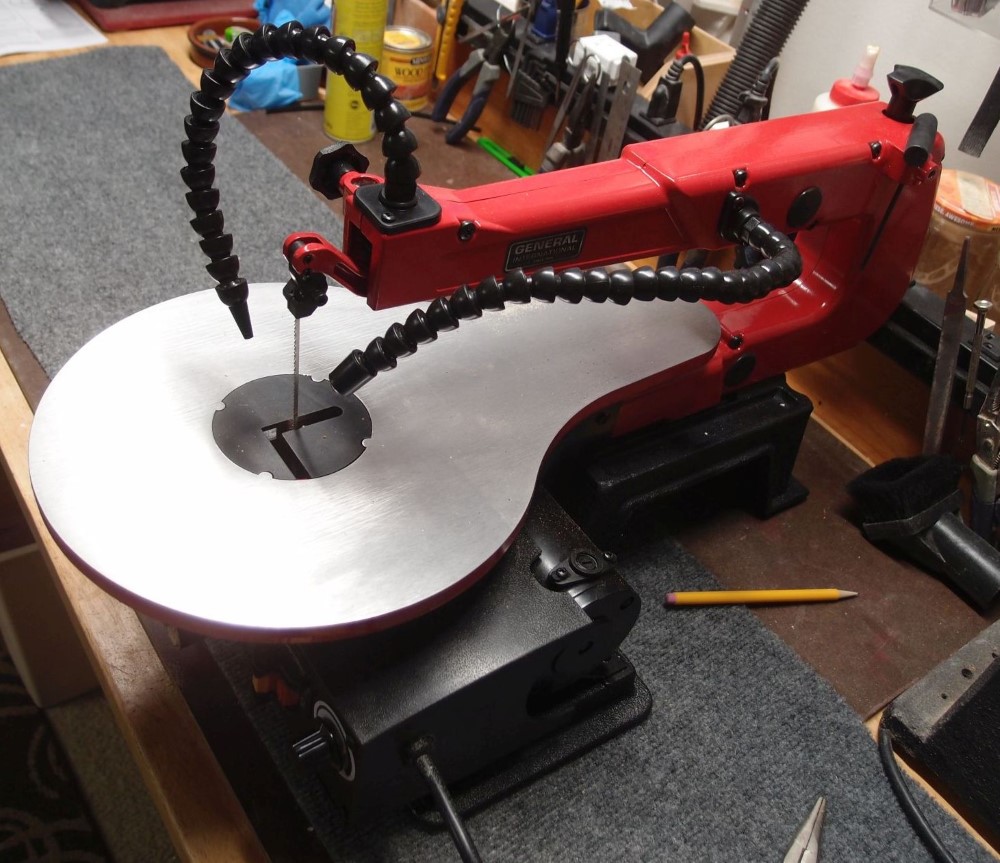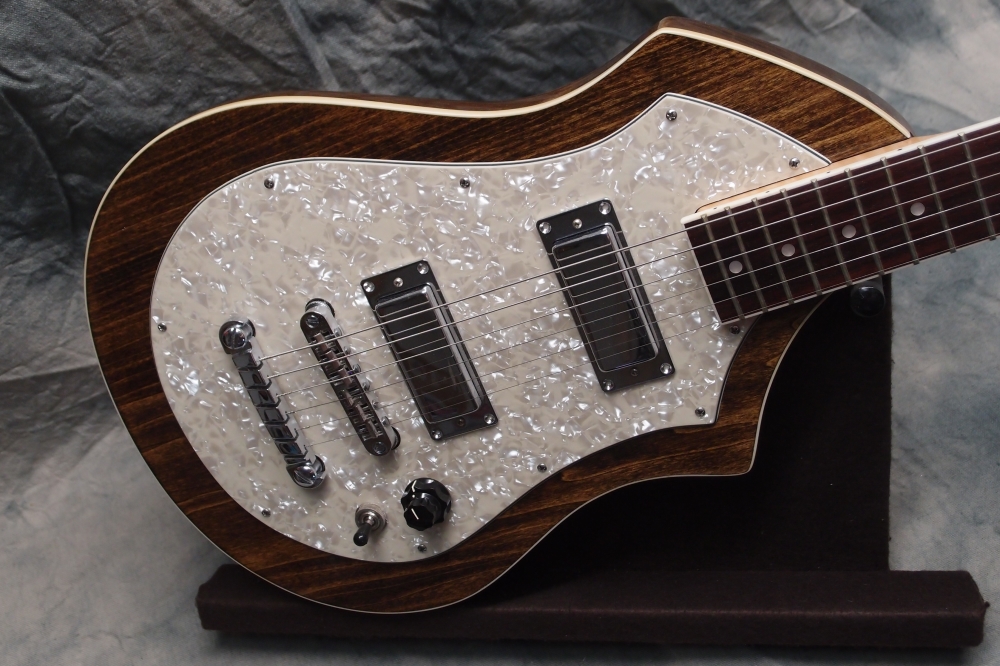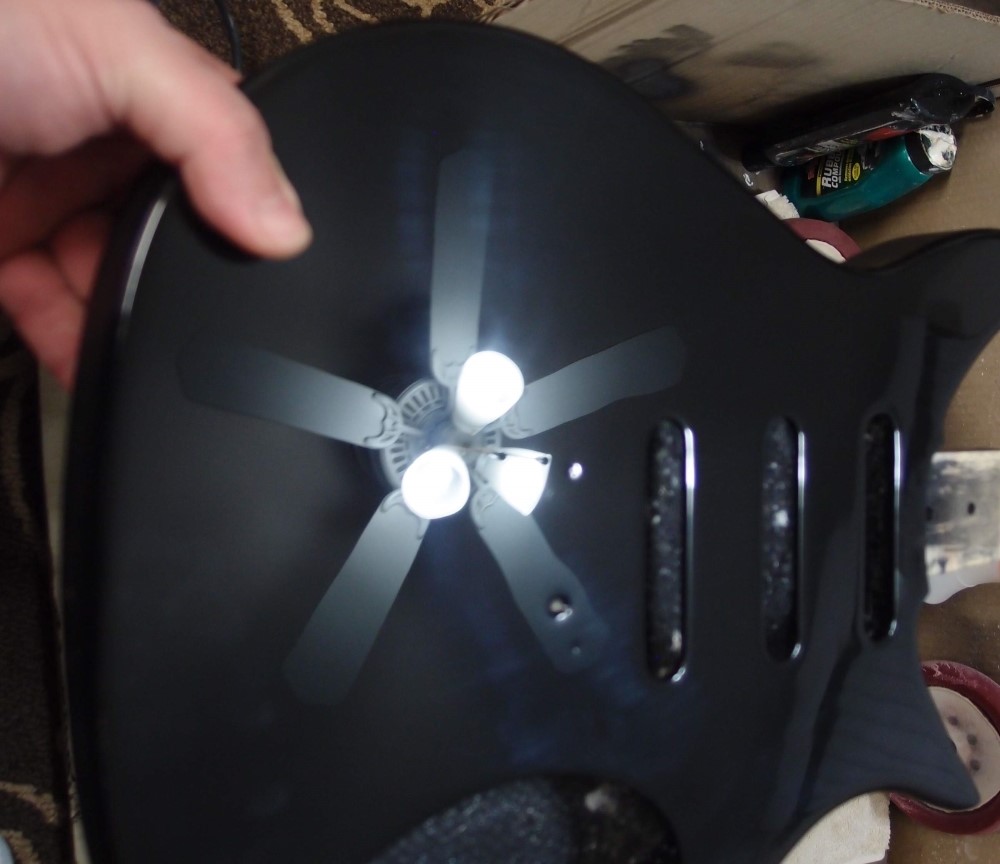Cutting Plastics

Cutting plastics presents a special problem in that many plastics generate significant heat and can melt. This is especially a problem with clear plastics and thicker materials.
Often you'll find that the material simply melted in front of the blade and re-solidified behind it, so you haven't actually made a cut, more like a weld. In this situation, if you pause cutting, the blade will become trapped in the material. Then you have a real problem.
Jigsaws blades heat up very fast in almost any material and are especially a problem in plastics.
The long blade on a band saw makes a good heat sink and is fairly resistant to heating, but thicker materials are still a problem. Even if the blade stays cool, the material can still melt around it.

Most scroll saw blades heat up pretty quickly and give the welding effect I described. For cutting plastics with a scroll saw, use a "skip-tooth" blade. This is a blade that looks like every other tooth is missing, and is much more resistant to heating. They are seldom labeled as such, just look in the package for what I described.



Questions or Inquiries?
Just want to say Hello? Sign the .